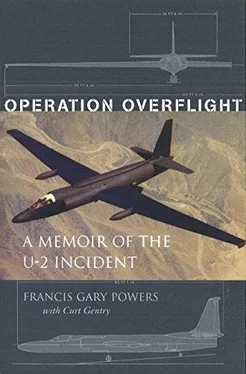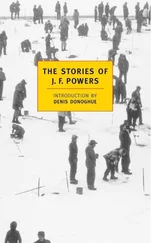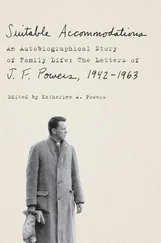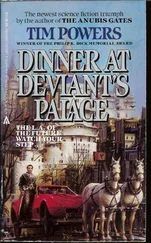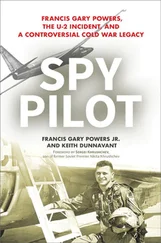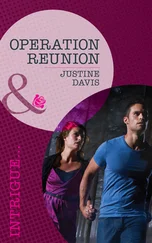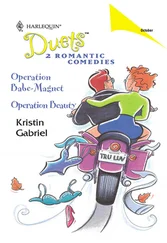It was only a matter of time, we knew, before Russia would have the capability. The only question was when.
Because this risk existed on every flight, the overflights never became “old hat.”
Whether awaiting its return, or flying it, we sweated each overflight.
During 1957 there was a step-up in activity in the U-2 program.
After the third and last class completed its training at Watertown, a new U-2 base was opened, this one in the Far East, at Atsugi, fifteen miles west of Yokohama, Japan.
Having received too much attention at Wiesbaden, the first U-2 group moved to a more isolated location, Giebelstadt.
It wasn’t isolated enough.
On takeoff, pilots frequently noticed a long, black limousine parked at the end of the runway. Checking license plates, agency security discovered it was registered by one of the Iron Curtain embassies.
Giebelstadt had been “compromised.” Shortly afterward, the first and second U-2 groups combined, at Adana. Although special flights were to continue to be made from West German bases, major emphasis in Europe now shifted to Turkey and its environs. By this time we were flying not only out of Adana but also, on occasion, from two bases in Pakistan: Lahore and Peshawar. There were two major reasons for the change. Being closer to targets in the Soviet Union in which we were most interested, this cut down flying time and fuel consumption. And, because of the ruggedness of the terrain, with its fierce mountains, it was one of the least defended portions of the Soviet border, decreasing odds on flights being spotted.
During 1957 there were modifications of the plane. Its silver coloration was changed to blue-black, making it even harder to spot when in flight. And an ejection seat was installed. Prior to this time, there had been few successful bail-outs from the U-2. If the plane became disabled and went into a spin, the g forces pinned the pilot in the cockpit, making it extremely difficult for him to climb out. The ejection seat was supposed to remedy this hazard.
It merely substituted another.
It was discovered that at high altitudes the plastic canopy over the cockpit, normally broken by the top of the seat when it ejected, froze and became like steel. Tragically, this wasn’t discovered until a pilot tried to escape using the ejection seat. Though he had hit the canopy with tremendous force, it hadn’t budged. He went down with the plane.
Following this, the explosive charge was increased and sharp breaker points installed on top of the seat, positioned in order to hit the canopy at its points of greatest stress, causing it to shatter.
Like many another pilot, I remained leery, hating to ride in a plane with an ejection seat. It was comparable to sitting on a loaded shotgun. There had been instances, though not yet in the U-2, where, because of some mechanical failure, pilots had been ejected while their planes were taking off, landing, or still aground.
There was a “safety pin” to keep the seat from ejecting. Pilots were supposed to remove this before takeoff. I never did, always waiting until reaching an altitude where I knew the chute had some chance to open.
Today successful ejections may be made from most aircraft while still on the ground. This was not the case during the period of Operation Overflight. Any altitude below two thousand feet was considered marginal.
In one respect our luck held. There were no incidents over Russia, not even a close call.
The year 1957 brought more changes, ramifications of which are still felt.
On August 26 the Soviet Union announced it had launched its first successful intercontinental ballistic missile, or ICBM.
On September 4 a new age opened with the successful orbiting of the first space satellite, Sputnik.
One month later, less one day, Sputnik II was in orbit, with the dog Laika aboard.
Russia was busy. So were the U-2s. With these events, the overflights gained a new and far greater importance. That the government of the United States was pleased with our efforts became evident when we were told that, although civilians, each of us had been awarded the Distinguished Flying Cross, our military records having been changed to show the award.
Another significant event during this period was a revision of attitude toward the aircraft itself. By now it was apparent the engineers had badly misjudged the reliability of the U-2. It had proven to be an extremely capable plane, able to withstand a great deal of abuse and still perform beautifully.
The number of flights increased. And, as we neared the eighteen-month expiration date of our contracts, we were asked to renew for another twelve months.
I had mixed feelings. My commitment to the program was total. I believed in what we were doing, feeling it was not only vital to our national security but that the information gathered might someday be a determining factor in our survival.
My reservations were personal.
Sometime earlier Barbara had obtained a transfer from Athens to a job at Wheelus Air Force Base, Tripoli, Libya. Occasionally it was necessary to ferry one of our T-33 instrument trainers to Wheelus for inspection; whenever possible, I would try to get the assignment. But our marriage was badly floundering and in the fall of 1957, when Barbara and I returned to the United States, we discussed the idea of a divorce.
I did not talk over my personal problems with the agency (they would not be mentioned here except for their relevance to what followed), but I did indicate that in November, when my contract expired, I might not renew.
Nor was I the only one who had made this decision. Several other married pilots had decided that an eighteen-month separation from their families was more than enough.
Having little choice, the agency capitulated. If we extended, they would let us move our families to Adana.
I gave the matter much thought. It seemed to me that many of Barbara’s and my problems could be attributed to long separations. Perhaps were we together we could still salvage our marriage. We could at least give it one more try. I did not believe in divorce—it seemed like giving up.
After taking another physical at Lovelace, I renewed my contract and brought Barbara back to Adana in time to celebrate Christmas in Turkey.
With the arrival of the wives, social life at Incirlik improved immeasurably, as did the food.
The married couples rented houses in town. Parties were frequent. Because the job was not without its tensions, when we got the chance to relax we made the most of it. This included considerable drinking. Enjoying liquor, I did my share. Barbara, I soon realized, was doing more than hers. There were arguments, incidents. Not really facing up to the fact that we had problems, I convinced myself that once she adjusted to the changed way of life, things would go more smoothly.
Because there was little to do in Turkey, the R&R leaves became much-anticipated events. We had a C-54 transport to bring in supplies from Germany. Arrangements were made for it to drop off families there one week, pick them up the next. On occasion, shopping-sight-seeing trips were set up for the wives, to Athens, Beirut, Paris, Naples. Many of the pilots bought cars and had them shipped to Adana. The detachment obtained a small boat with outboard engine. There was a reservoir not too far away. To our activities we added water skiing. Also, on one of our trips to Germany, we acquired a German shepherd, whom we named Eck. With the growing number of conflicts in the Middle East—Suez in 1956, Lebanon in 1958—Incirlik became strategically important, as both a military base and a staging area. With the increase in permanent military personnel stationed there, a few more “creature comforts” were added, including an officers’ club, which, while primitive compared to those on most modern bases, added to our social life.
Читать дальше
